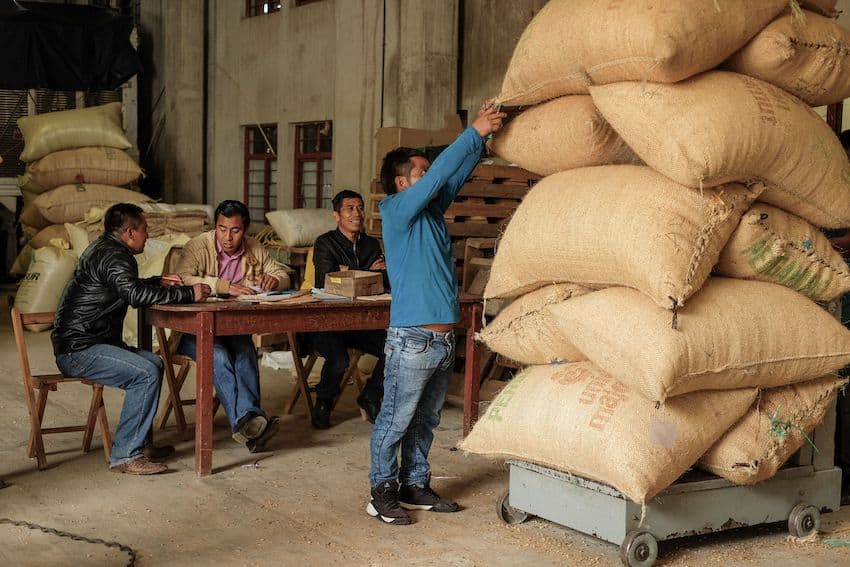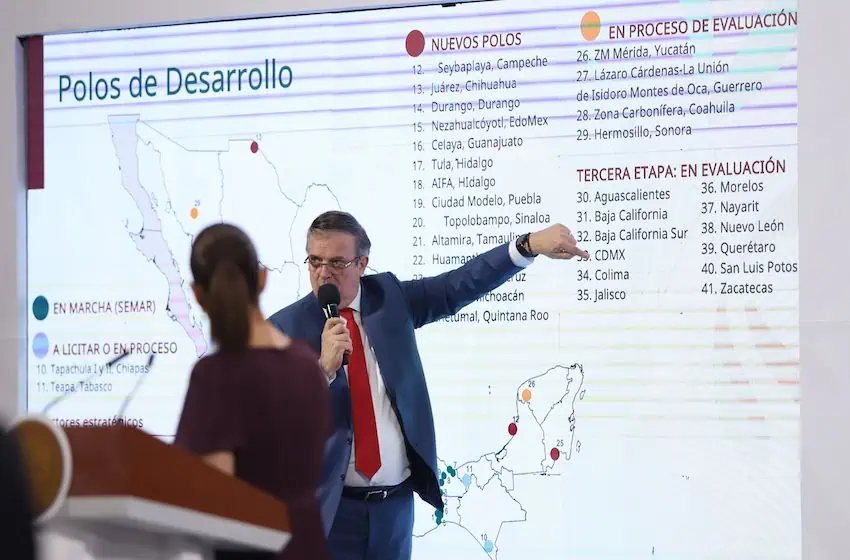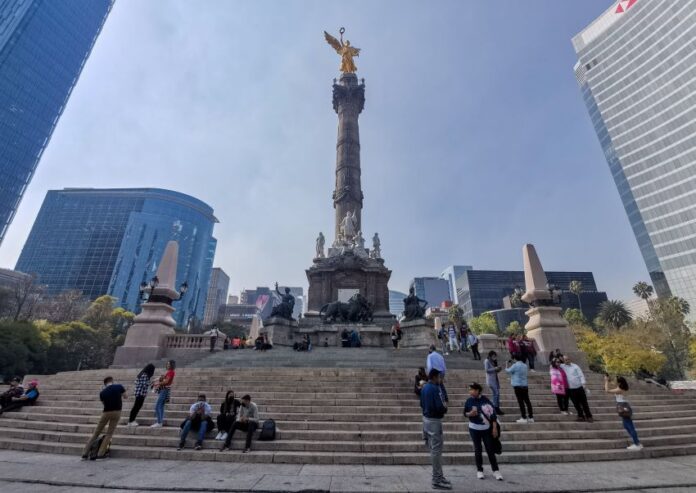Mexico City remains Mexico’s most competitive state for business, while Chiapas is the least competitive, according to an analysis by a leading Mexican think tank.
The Mexican Institute for Competitiveness (IMCO) has published its 2025 State Competitiveness Index (ICE), in which it ranks all 32 federal entities based on their performance across 53 different indicators in six categories called “sub-indexes.”
The sub-indexes are innovation and economy; infrastructure; labor market; society and environment; law; and political system and governments.
Among the 53 indicators are ones that look at GDP growth rates in the 32 states, levels of informality among workers, state government debt, hospital beds per capita, access to the internet and crime rates.
According to IMCO, the ICE “measures the ability of the country’s states to generate, attract, and retain talent and investment.”
“A competitive state is one that makes efficient use of its capabilities to foster a favorable environment that contributes to improving its development and, consequently, the well-being of its inhabitants,” the think tank said in its index report.
IMCO also said that “in an era in which the global rules-based system is being questioned, the best strategy for Mexico is to bet on competitiveness.”
“The current geopolitical environment presents opportunities for the country, as long as it manages to maintain its relative advantage in access to the U.S. market. To capitalize on this situation, Mexico must promote its economic development,” it said.

CDMX comes out on top once again
Mexico City is the only entity in the country deemed to have a “very high” level of competitiveness. The capital — Mexico’s top recipient of foreign investment and a magnet for workers from all over the country — retained its 2024 position at the top of the IMCO index.
“Mexico City positioned itself as the most competitive state, … taking first place in four out of the six sub-indexes assessed. It stood out in the economy and innovation sphere by registering the highest GDP per capita excluding the mining sector (541,916 pesos [US $28,750] per person), a high level of economic diversification (943 sectors), and the second highest patent rate (4.71 per 100,000 economically active people),” IMCO said.
Mexico City also ranked first in the sub-indexes for infrastructure; society and environment; and political system and governments.
A large number of major Mexican and foreign companies have offices in the capital, while the federal government and most of its agencies and departments, as well as some of the nation’s leading healthcare and education facilities, are based in the city. This helps Mexico City attract highly educated workers from around the country and abroad.
Mexico’s next most competitive states
IMCO determined that three states have a “high” level of competitiveness, allowing them to occupy positions 2, 3 and 4 on the ICE. They are:
2. Baja California Sur (BCS): a state that occupies the southern portion of the Baja California Peninsula. It is best known for the twin resort cities of Cabo San Lucas and San José del Cabo. A tourism powerhouse, BCS also ranked as Mexico’s second most competitive state last year.
3. Nuevo León: a heavily industrialized northern border state whose capital is Monterrey. The state moved up one spot on the ICE.
4. Jalisco: a western Mexico and Bajío region state that is home to the major city of Guadalajara. The capital is sometimes referred to as “the Silicon Valley of Mexico” due to the presence of a significant number of tech companies. Jalisco moved up six spots on the ICE.
Guadalajara hotel area leads the country in convention and business tourism
Baja California Sur was the top state on the “labor market” sub-index.
According to IMCO, that subindex “measures the efficiency of the main factor for production: human capital.”
IMCO determined that 12 states have a “medium-high” level of competitiveness. They occupied positions 5 to 16 on the ICE.
5. Aguascalientes: up one position compared to 24.
6. Querétaro: down one position.
7. Coahuila: down four positions.
8. Chihuahua: up one position.
9. Sonora: down two positions.
10. Yucatán: down two positions.
11. Baja California: up three positions.
12. San Luis Potosí: up six positions.
13. Guanajuato: up nine positions.
14. Hidalgo: up 11 positions.
15. Tamaulipas: down three positions.
16. Sinaloa: down three positions.
Twelve other states are deemed to to have a “medium-low” level of competitiveness. They are Tlaxcala, Colima, Campeche, Durango, Quintana Roo, Nayarit, México state, Puebla, Tabasco, Veracruz, Morelos and Zacatecas.
Those states occupied positions 17 to 28 on the ICE.
Mexico’s least competitive states
Chiapas fell two places compared to the 2024 ICE to occupy the 32nd and final position on this year’s State Competitiveness Index. It is the only state deemed to have a “very low” level of competitiveness.
Chiapas ranked last on the index with poor results on the sub-indexes for society and environment; infrastructure; and labor market, IMCO said.
Among a range of poor results, the think tank noted that Chiapas had the lowest average income among full-time workers (7,059 pesos or US $375 per month), the lowest average level of schooling among people aged 25 or older (7.56 years), and the second lowest proportion of people with technical or higher education (16%).

IMCO determined that three states had a “low” level of competitiveness. They occupied positions 29 to 31 on the ICE.
29. Michoacán: no change on the index compared to last year.
30. Oaxaca: up two positions.
31. Guerrero: no change.
Mexico’s three least competitive states are all located in southern Mexico, a disadvantaged part of the country that has been historically neglected.
Oaxaca ranked as Mexico’s least competitive state last year.
The State Competitiveness Index and Plan México
The publication of IMCO’s latest State Competitiveness Index comes five months after President Claudia Sheinbaum presented Plan México, an ambitious economic initiative whose goals include making Mexico the 10th largest economy in the world, reducing reliance on imports from China and other Asian countries and creating 1.5 million new jobs.
IMCO said that the success of the plan “needs local strategies,” and asserted that “the ICE is a tool that allows federal entities to understand their competitive advantages and develop collaborative strategies that help them to exploit their potential and benefit from this industrial policy.”
IMCO outlined “strengths and challenges” of 12 “economic well-being corridors” identified in Plan Mexico.
The challenges included combating insecurity in various parts of the country, increasing economic diversification in several economic corridors and lifting foreign investment in southern states.

In its index report, IMCO said that states will “play a key role in the success of industrial policy and must be prepared to take advantage of Plan México to spur productive investment and raise the quality of life of their citizens.”
“To achieve this, they require logistical excellence, abundant energy, a capacity for innovation, talent and a solid rule of law,” the think tank said.
Proposals to support Plan México
IMCO set out proposals in five different areas that are aimed at supporting Plan Mexico achieve its aim of “transforming the economic conditions in the country.”
The think tank proposed:
- Promoting innovation and economic diversification, including by supporting the adoption of technologies such as artificial intelligence (AI).
- Developing logistical infrastructure, including by investing in infrastructure in states with “high air cargo capacity” such as México state, where the Felipe Ángeles International Airport is located.
- Strengthening security, the rule of law and legal certainty, including by bolstering state police forces.
- Developing human capital, including by supporting training centers focused on digital skills.
- Promoting environmental sustainability, including by developing state-based energy efficiency programs.
* IMCO’s 2025 State Competitiveness Index report (Spanish), which runs to more than 100 pages and includes scorecards for each of Mexico’s 32 federal entities, can be downloaded by clicking the “libro” tab at the top of this page.
Mexico News Daily
